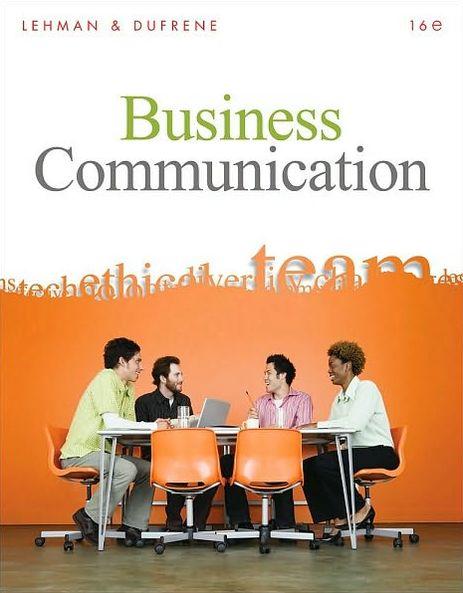
Business Communication 16th Edition by Carol Lehman,Debbie DuFrene
Edition 16ISBN: 978-1111983024
Business Communication 16th Edition by Carol Lehman,Debbie DuFrene
Edition 16ISBN: 978-1111983024 Exercise 2
Describe the fi ve stages in the communication process using the following terms: (a) sender, (b) encode, (c) channel, (d) receiver, (e) decode, (f) feedback, and (g) interferences or barriers.
Explanation
A communication process includes the 5 stages:-
1. Sender :
Sender is a person who decides or starts the process of communication. Sender carefully designs the message of the communication.
2. Encoding:
Encoding is the process of organising the message before sending it. The message should be encoded in such a way that it receive as close as possible to the original message.
3. Decoding:
Decoding is the process of interpreting the message by the receiver. The purity of the message received depends upon the encoding done by the sender.
Different people decode a message in different ways, so while encoding the message it receiver perceptions should be kept in mind.
4. Feedback:
Response to the message given by the receiver is called as the feedback. It can be given in a verbal that is through words or non verbal that is through gesture.
5. Interference:
Interferences are the disturbance occurred during the communication process. These disturbances may occur due to difference in culture, age, economic strata, education or due to poor selection of channel of communication.
Communication process can be represented as:-










1. Sender :
Sender is a person who decides or starts the process of communication. Sender carefully designs the message of the communication.
2. Encoding:
Encoding is the process of organising the message before sending it. The message should be encoded in such a way that it receive as close as possible to the original message.
3. Decoding:
Decoding is the process of interpreting the message by the receiver. The purity of the message received depends upon the encoding done by the sender.
Different people decode a message in different ways, so while encoding the message it receiver perceptions should be kept in mind.
4. Feedback:
Response to the message given by the receiver is called as the feedback. It can be given in a verbal that is through words or non verbal that is through gesture.
5. Interference:
Interferences are the disturbance occurred during the communication process. These disturbances may occur due to difference in culture, age, economic strata, education or due to poor selection of channel of communication.
Communication process can be represented as:-










Business Communication 16th Edition by Carol Lehman,Debbie DuFrene
Why don’t you like this exercise?
Other Minimum 8 character and maximum 255 character
Character 255


